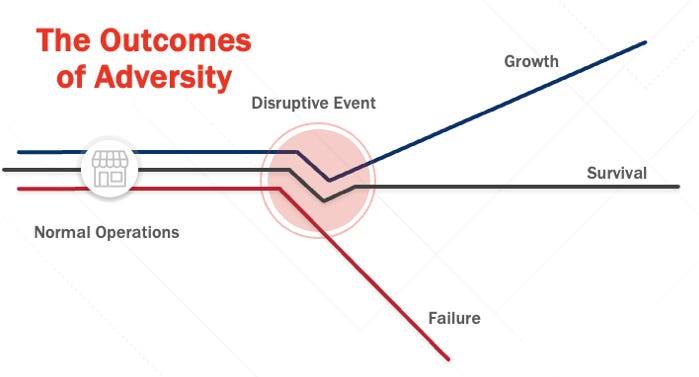Races hold a special place in our communities. They are one of the few events where people come together, in large numbers, to cheer for and encourage strangers – simply hoping they succeed and helping them accomplish their goals. They drive representatives from local government, businesses, public safety agencies, non-profits, universities, and so many other organizations to collaborate in pursuit of a simple goal: deliver a great event.
This unique and rare dynamic underscores the ever-increasing importance of preserving the integrity and safety of these events, especially as the challenges they face grow more complex.
Today, race organizers must navigate a wide range of risks—from severe weather and security threats to public health concerns. Understanding how to balance the work to mitigate those risks while delivering an exceptional race event is a key piece of getting left of bang.
Grounding Preparation in Today’s Realities
To position themselves for successful events, I encourage race organizers to ground their planning with three critical assumptions in mind:
Expectations Are Rising: The bar for public safety professionals and the agencies that employ them is high. Mistakes or delays in decision-making are met with decreasing tolerance, even as resources and investments often fail to keep pace with demands.
A Changing Threat Landscape: From severe weather to security incidents, the environment in which events operate is shifting rapidly. As the speed at which incidents intensify increases, the time and opportunity available for security providers to intervene left of bang gets compressed.
Organizational Decision-Making Processes is Critical: Success in navigating these challenges has shifted from individuals to the organization as a whole. When the person who may recognize a hazard is different than the person who will decide what the organization is going to do, who is different again from the person implementing the plan, how quickly an organization can complete this cycle can be the difference between left of bang success, and right of bang calamities.
Building Organizational Decision-Making
Effective preparation for race-day risks centers on organizational decision-making. This is particularly challenging for races, where teams are often made up of volunteers or ad-hoc staff and exist only for a single event. Decision-makers must be ready to call off an event—even mid-race—while navigating the repercussions of such choices. That isn’t easy.
For race directors and event staff looking to establish fast, clear decision-making processes while still left of bang, here are four recommendations to equip your teams with systems and protocols that work under pressure.
1. Decision-Making on the Fringes
It’s easy to make decisions in clear-cut scenarios. There isn’t a lot of disagreement about what to do when a Category 5 hurricane threatens to make landfall when racers are at the starting line or when perfect running weather is forecasted. The challenge lies in the gray areas—when conditions are uncertain and impacts are unpredictable. In these situations, consensus is much harder to form.
Preparing for uncertain conditions begins by defining specific criteria that will result in a go/no-go decision. Setting clear go/no-go criteria is incredibly empowering for an organization as it allows for informed choices to be made about watchpoints (conditions where hazard monitoring should begin) and action points (conditions requiring a decision).
While the development of contingency plans for each of the scenarios stemming from go/no-go decisions can be delegated to event staff and public safety professionals, establishing the decision-making thresholds is the responsibility of the race director/event executive.
2. Inform Your Decision-Making Process
To make timely decisions, you need robust situational awareness systems that alert you to changing conditions. A decision that you are never prompted to make will never get made.
Whether it’s weather, security, or crowd management, the goal is to eliminate guesswork and notify decision-makers (who are probably multitasking, speaking with key stakeholders, and monitoring the race itself) that an incident is developing.
When considering situational awareness or hazard monitoring systems, the ideal platform should provide you with the following:
General alerts about potentially dangerous conditions for any given day.
Specific alerts that provide you with specific information about the time, location, or intensity of a situation.
Access to a professional who can help you contextualize the alert and understand how it may impact you.
As part of your left-of-bang preparations, spending the time to establish and customize your alerts is a critical step as it can prevent excess notifications (which delay decision-making) and allow for trust to be built that the right information will be provided at the right time.
For readers looking to expand on this topic, the article below provides a breakdown of the five conditions of situational awareness and how weather platforms fcan inform the progression through each as severe weather threatens.
3. Maintain Flexibility with Tested Options
Options create confidence in decision-making. The more alternatives you have, the less likely you will feel cornered when conditions shift. Develop the plans required to start your race early, delay your race start time, cancel and reschedule the race, pause the race once it has begun (and then restart it), and any other scenario that could present itself.
Even if these situations are less-than-ideal alternatives to simply starting your race on time and as planned, having the options can be a better choice than simply canceling the event altogether. But recognize that developing a plan is rarely enough to be confident in the team’s ability to pull it off. Race directors and executives should lead and oversee the testing and validation of those plans to ensure they are a true option when disruptions occur.
4. Learn How to Learn from Others
While disasters occur infrequently at the local level, they are fairly regular occurrences nationally. The most prepared organizations have a way to learn from incidents elsewhere, using them to stress-test their own plans and advance their readiness.
Races have a very similar dynamic, and by leveraging advancements in technology and AI, race directors can analyze scenarios from across the country, anticipate challenges, and avoid repeated mistakes.
Being Positioned to Thrive
When disasters and disruptions occur, organizations find themselves on one of three paths:
Failure: Some organizations are unable to respond, adapt, and survive (whether financially, operationally, or reputationally) to disruption.
Survival: Some organizations manage to survive an incident but do so by barely holding on. They may return to baseline/pre-incident performance, but it is a struggle.
Growth: This path is reserved for organizations that are able to thrive despite adversity. By having the foresight of changing conditions, the ability to make decisions and adapt, and being resilient to change, this group sees opportunities not available to others.
The path your organization takes depends on the choices made left of bang. By investing in your readiness and the ability to make decisions in dynamic and changing conditions, race organizers can position themselves to thrive. Getting left of bang isn’t just about avoiding failure; it’s about designing systems that empower teams to succeed, no matter what comes their way.
The spirit of races and the impact they have on communities deserves protection. By adopting these strategies, race organizers can confidently prepare for the unpredictable, safeguarding participants and spectators while maintaining their mission of serving the community.
Whenever you’re ready, here are three ways I work with clients:
Consulting Projects and Speaking Events. I help organizations prepare for an uncertain future with a variety of preparedness initiatives and left-of-bang-focused presentations.
Proactive Threat Recognition Training. Learn how to read the behaviors and establish baselines discussed in the book Left of Bang: How the Marine Corps’ Combat Hunter Program Can Save Your Life in our online training courses.
Subscribe to the Left of Bang Academy: Access the tools and resources needed by emergency management and homeland security professionals to prepare their organizations for future disasters, disruptions, and crises.
If you’d like to learn more and see what is available for your organization, you can reach me at patrick@cp-journal.com or on LinkedIn.







